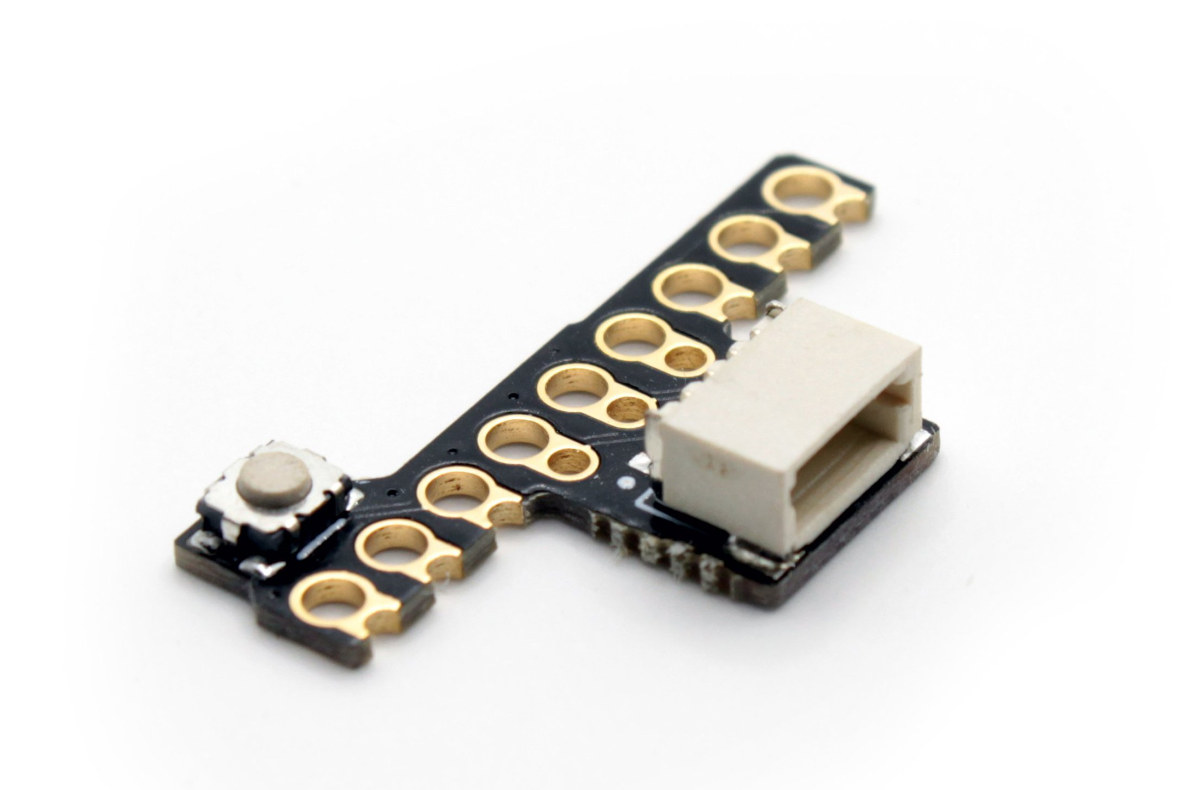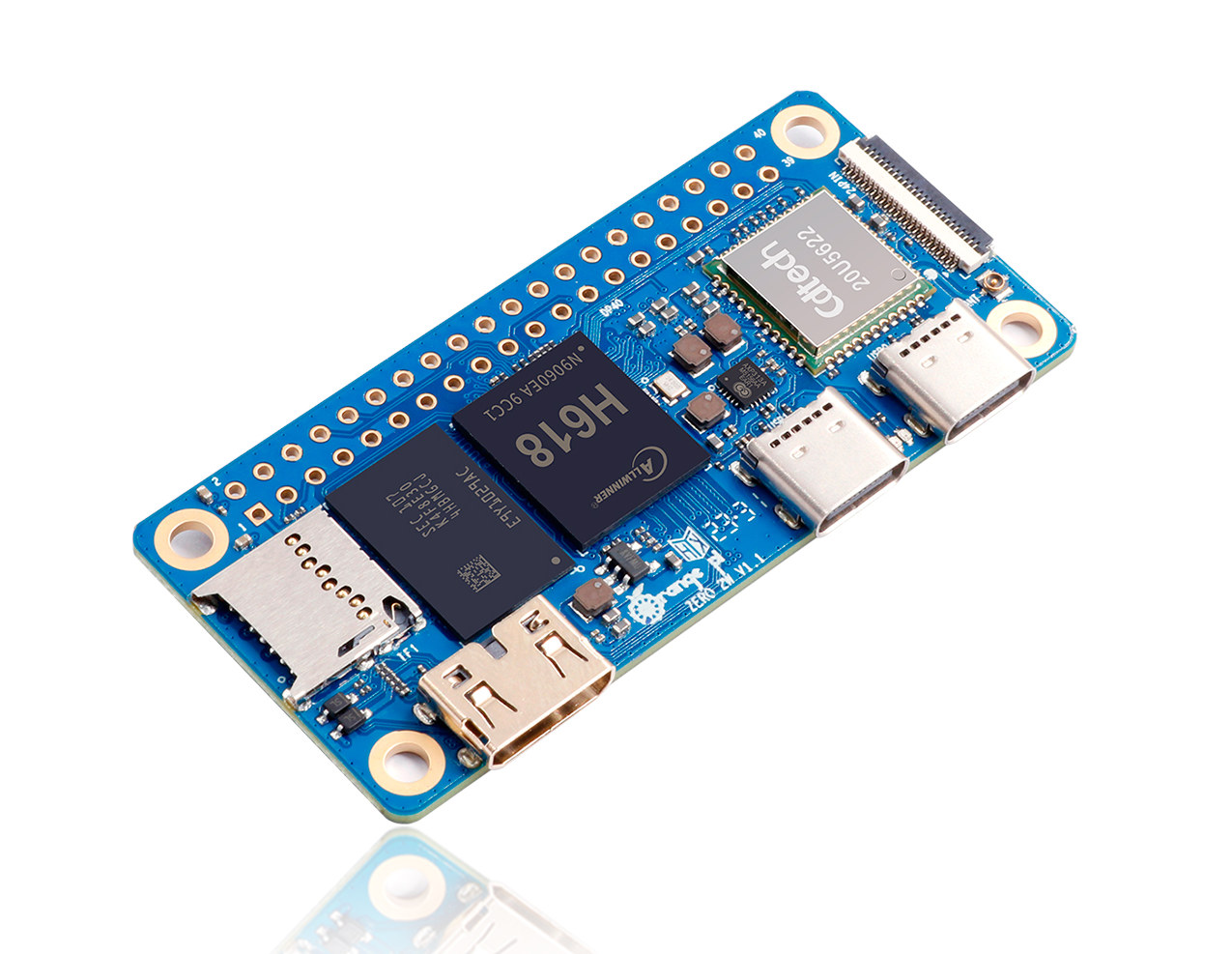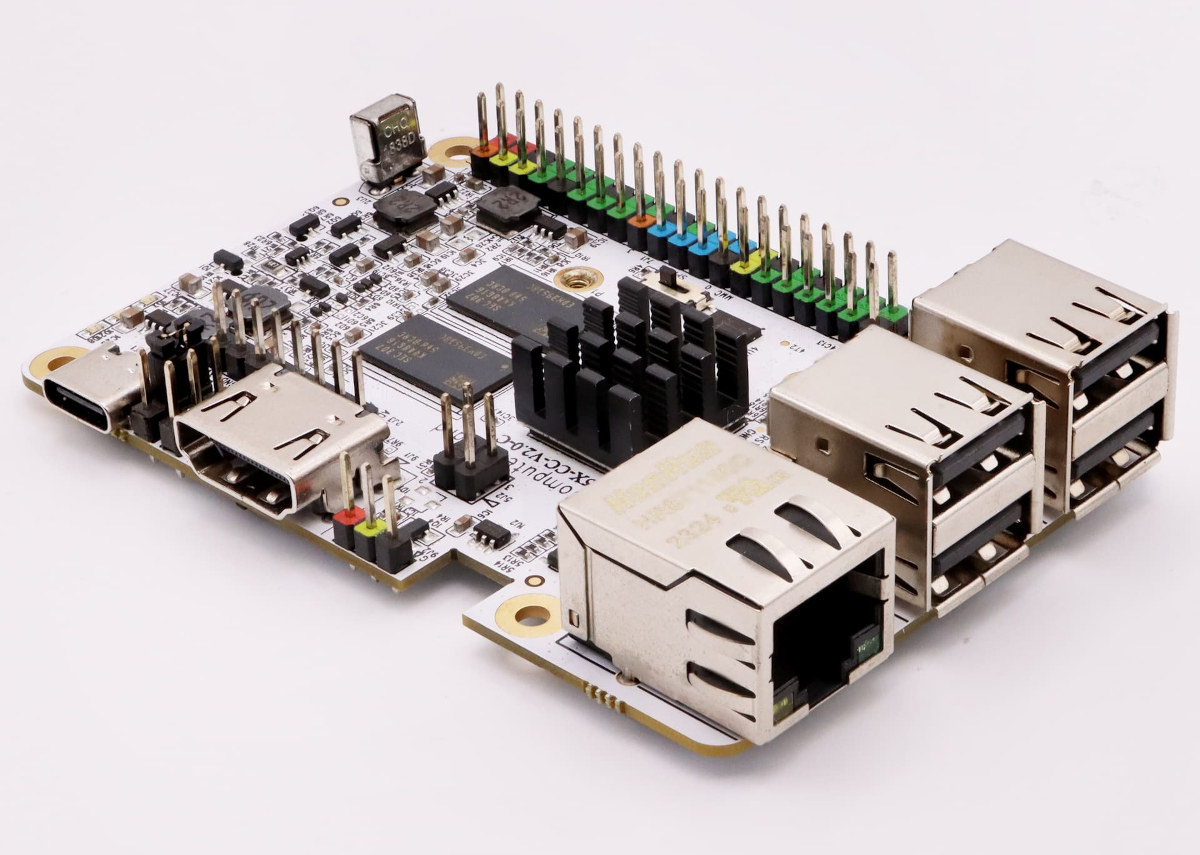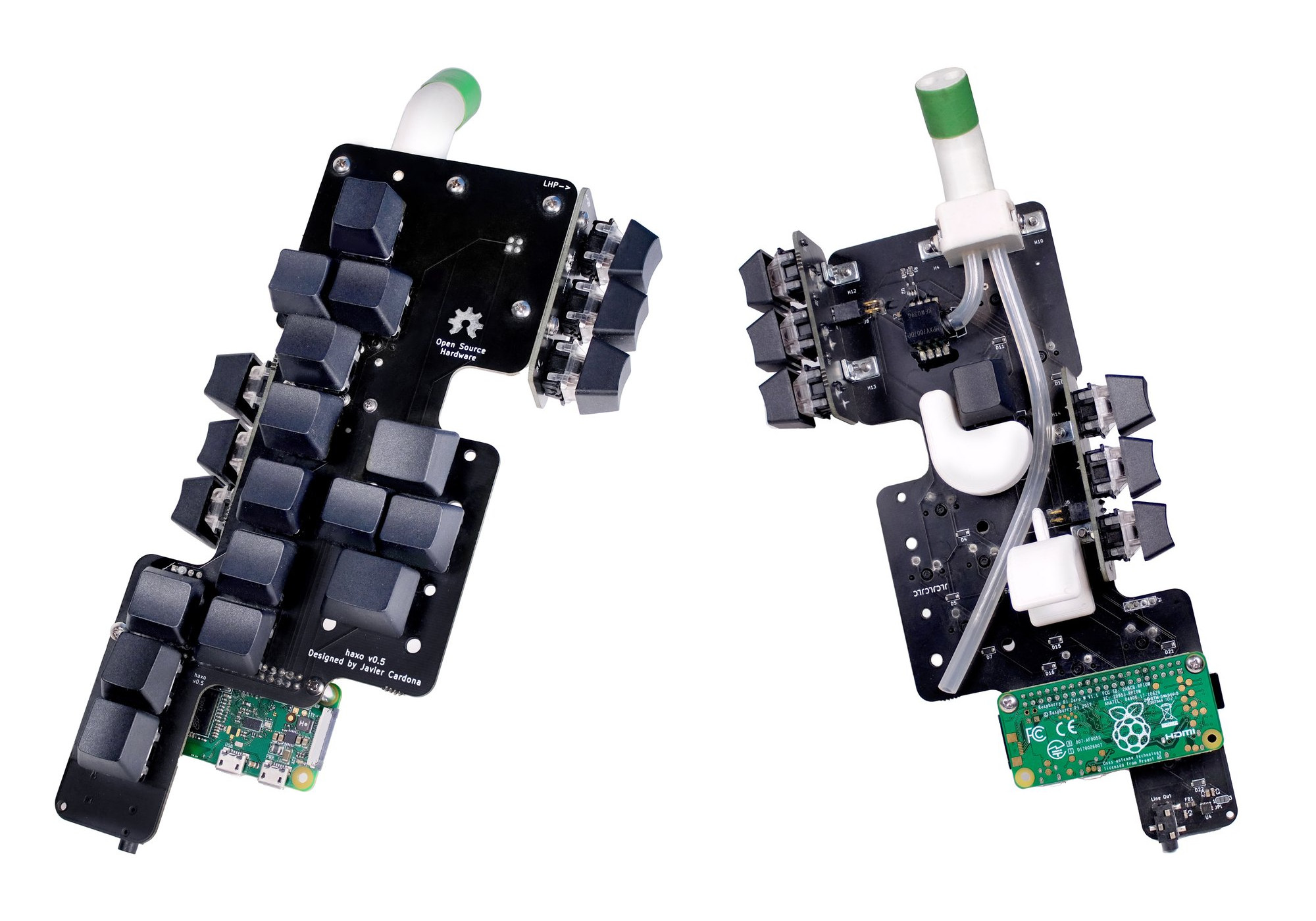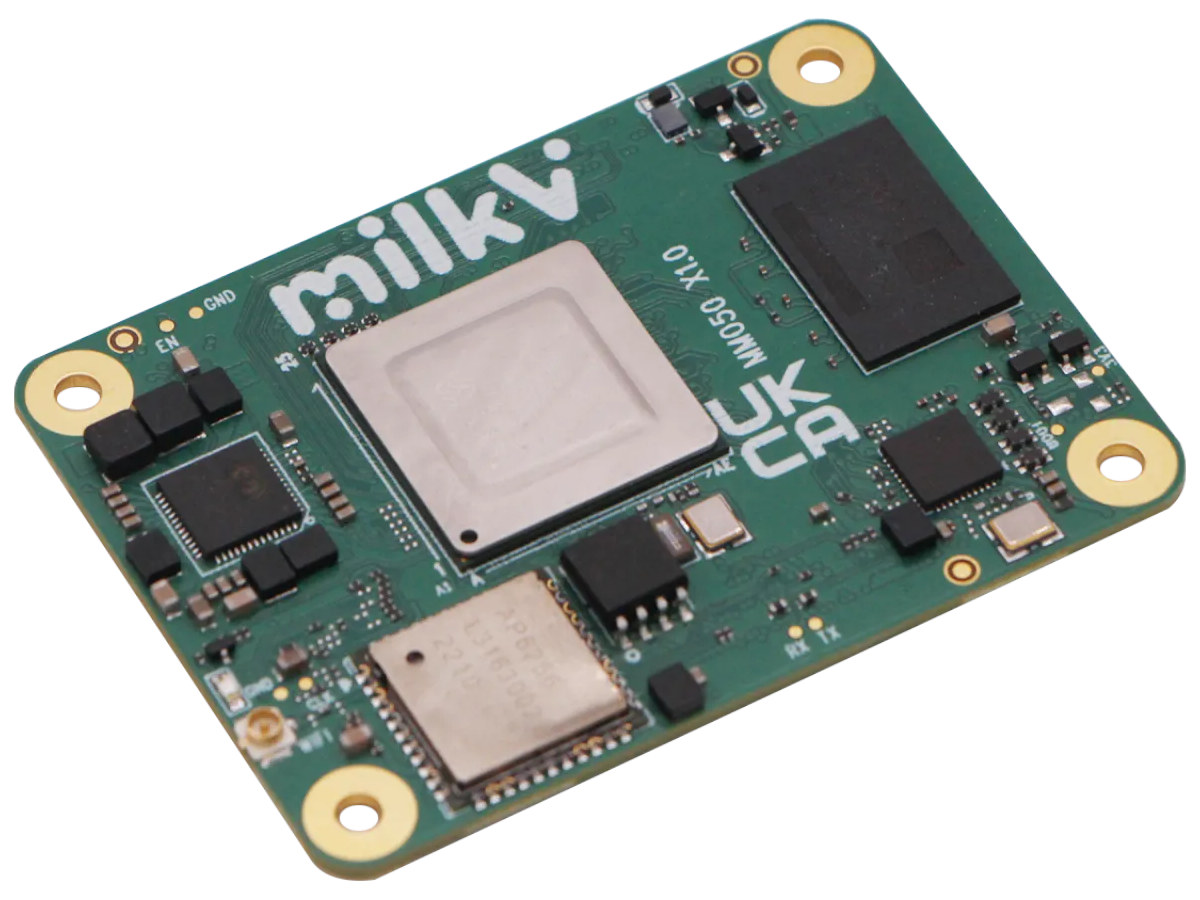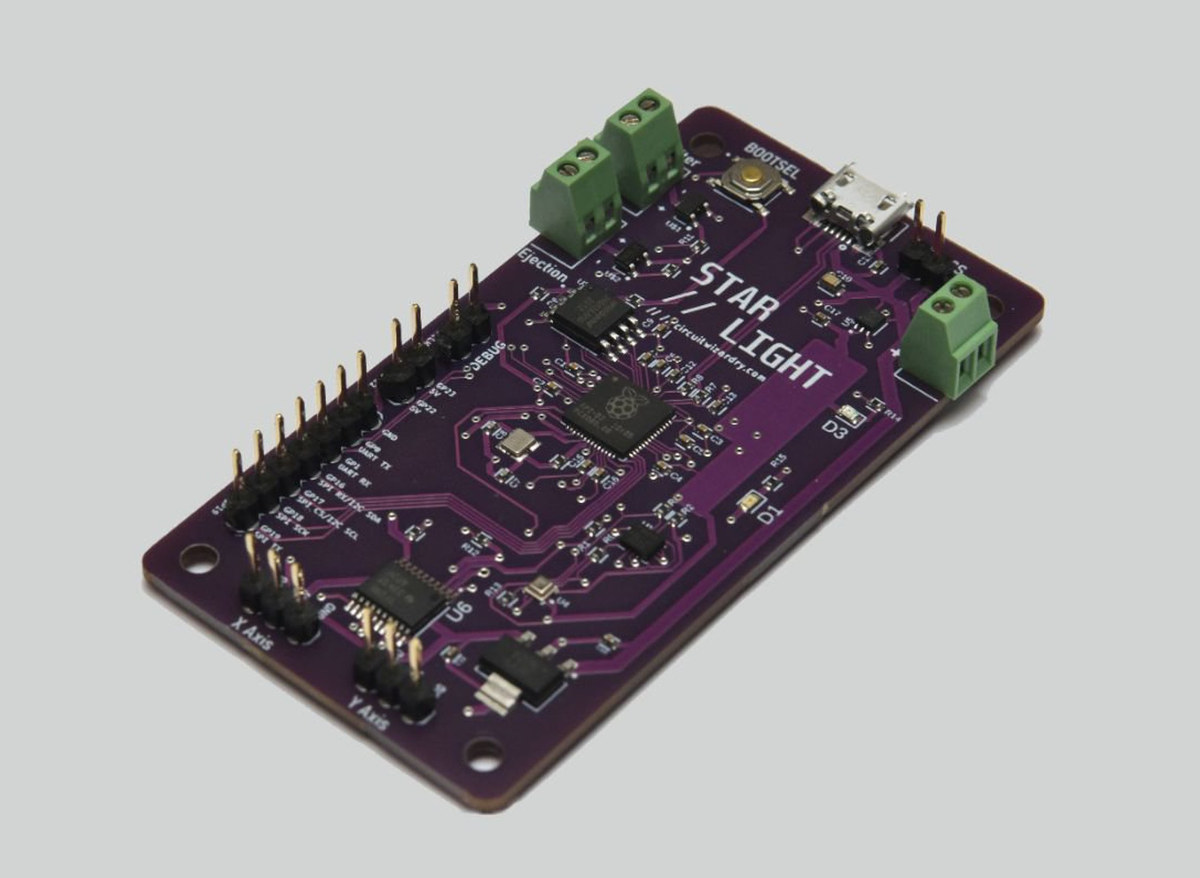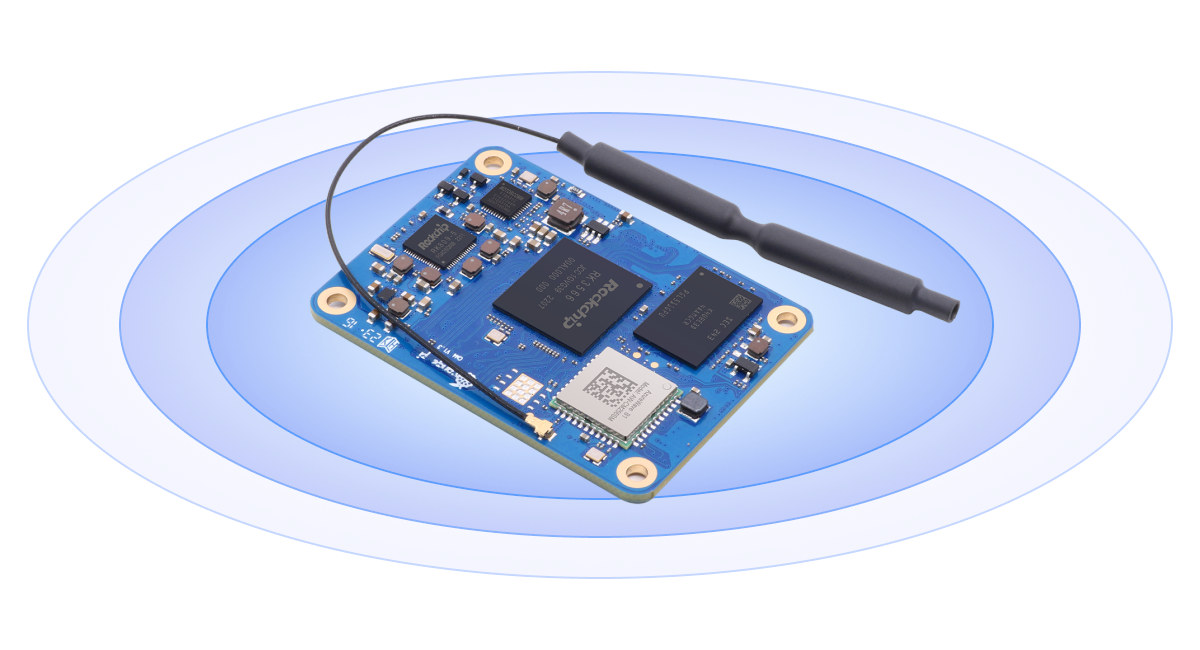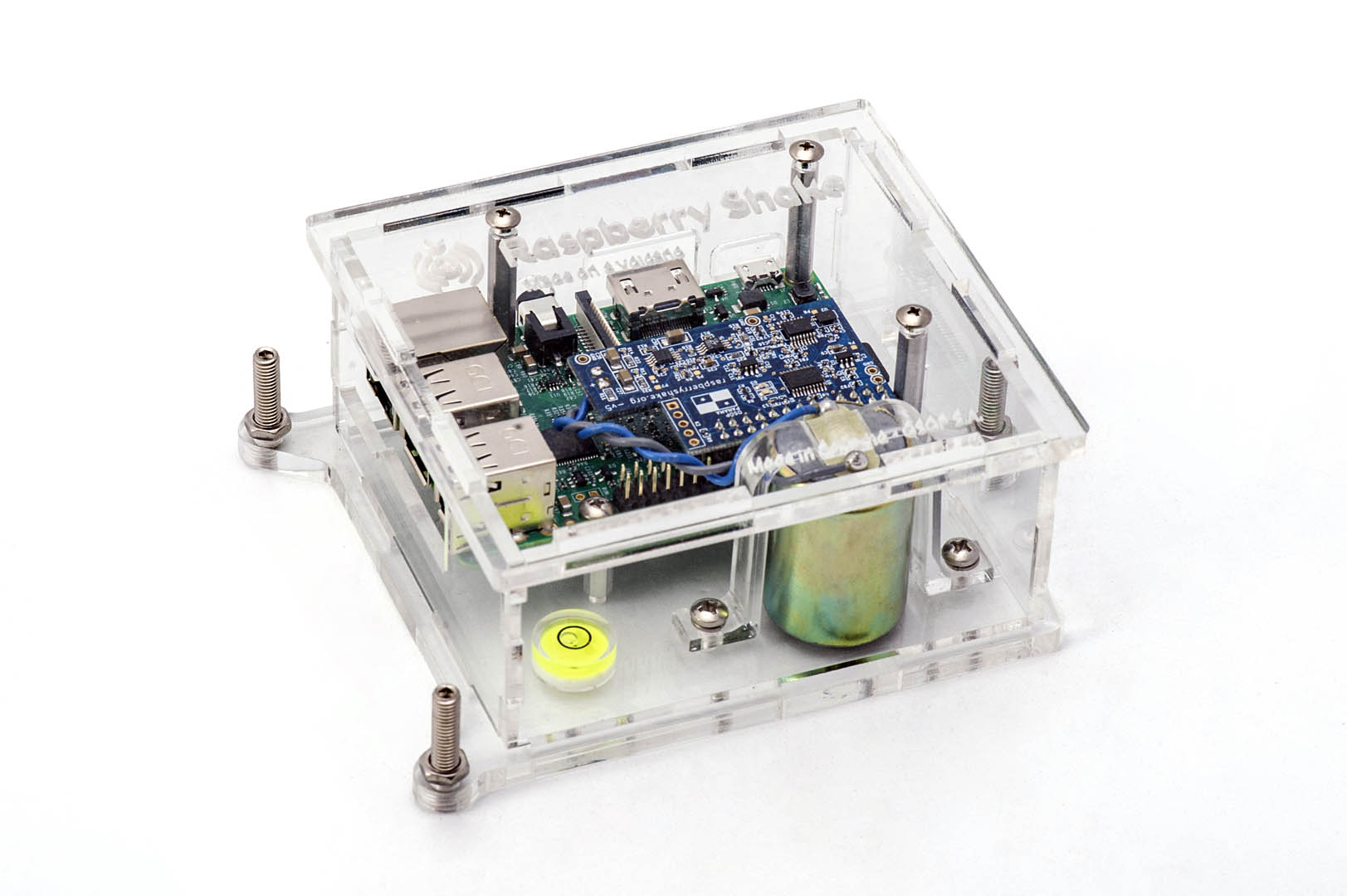Pico QwiicReset is a tiny add-on board for the Raspberry Pi Pico that adds a Reset button as well as the Qwicc connector to more easily connect I2C modules to the popular MCU board. The lack of a Reset button on the Raspberry Pi Pico has always been an issue since the reset pin is used to flash the firmware, so people have tried various ways to add a Reset button to the Pi Pico board. The Pico QwiicReset is like an extension of the Pimoroni “Captain Resetti” button with an extra Qwiic connector. The Pico QwiicReset board is shown soldered to a Raspberry Pi Pico board above, but it’s also compatible with the Raspberry Pi Pico W and it works with or without headers soldered to the board. But you may noticed the Debug header is partially covered on Pico W, which means the add-on board cannot be used […]
Orange Pi Zero 2W – A Raspberry Pi Zero 2W alternative with up to 4GB RAM
As its name implies the Orange Pi Zero 2W is an alternative to the Raspberry Pi Zero 2W with basically the same features and form factor, but equipped with a slightly more powerful Allwinner H618 quad-core Cortex-A53 clocked at 1.5 GHz, and more RAM options from 1GB to 4GB. The new Orange Pi board comes with a mini HDMI port, two USB-C ports, WiFi 5 and Bluetooth 5.0 wireless module, a microSD card for the OS, a 16MB SPI flash for the bootloader, the usual 40-pin Raspberry Pi GPIO header, and a 24-pin “function” connector used for expansion boards and located where the camera connector is on the Pi Zero 2W. Orange Pi Zero 2W specifications: SoC – Allwinner H618 quad-core Arm Cortex-A53 processor @ up to 1.5GHz with 1MB L2 cache and Arm Mali-G31 MP2 GPU with support for OpenGL ES 1.0/2.0/3.2, OpenCL 2.0, Vulkan 1.1 System Memory – […]
Libre Computer AML-S905X-CC-V2 SBC directly installs Linux images from the Internet
Libre Computer AML-S905X-CC-V2 “Sweet Potato” is a “new” Amlogic S905X SBC following the Raspberry Pi 3B form factor and that will eventually directly boot Linux images downloaded from the Internet using the Libre Computer OS Tool (LOST). I wrote “new” in quotes because the single board computer is an update to the Potato board (AML-S905X-CC) introduced in 2017 with just a few hardware changes. But that’s because Libre Computer focuses on the software side and all/most of their boards can now run mainline Linux and have support for features such as LOST whose support is set to be implemented by November. Libre Computer AML-S905X-CC-V2 SBC specifications with changes in bold or strikethrough: SoC – Amlogic S905X quad-core Arm Cortex-A53 processor @ 1.5 GHz with penta-core Arm Mali-450MP GPU, and Amlogic Video Engine 10 VPU System Memory – 2GB DDR4 (OEM can request 1GB) Storage 1x microSD card slot with UHS […]
Haxophone – A Raspberry Pi-based electronic saxophone with mechanical keys (Crowdfunding)
The Haxophone is an unusual Raspberry Pi expansion board that transforms the popular SBC into a travel saxophone using mechanical keys. The hackable musical instrument is open-source hardware and OSHWA certified and comes with mechanical keys which makes it easily repairable, customizable by changing keycaps or the firmware, and at a price point cheaper than commercial digital saxophones with custom molded keys. Haxophone key features and specifications: Custom Raspberry Pi HAT PCB Tactile-feedback 5-pin mechanical switches Mechanical keycaps Airflow pressure sensor Built-in audio amplifier compatible with Raspberry Pi Zero and Zero W Serial console for hacking Weight – 180 grams OSHW certifications – PT000005 You’ll find KiCAD hardware design files, assembly instructions, documentation, and the software and firmware used with the Haxophone on GitHub. There are two main software components, first haxo-rs Rust-based driver for detecting key presses and breath in order to convert them into notes, and fluidsynth synthesizer […]
Raspberry Pi CM4 compatible RISC-V SoM features StarFive JH7110 SoC
We’ve seen many Arm-based system-on-modules following the Raspberry Pi CM4 form factor, but we’ve now got a RISC-V one courtesy of the Milk-V Mars CM CPU module powered by a StarFive JH7110 quad-core RISC-V SoC. The RISC-V module comes with up to 8GB RAM, a 16MB SPI flash, an optional eMMC flash, onboard GbE PHY, and a wireless module with WiFi 5 and Bluetooth 5.2 plus the two 100-pin board-to-board connectors offering (partial) compatibility with carrier boards made for the Raspberry Pi Compute Module 4. Specifications: SoC – StarFive JH7110 CPU – Quad-core RISC-V processor (RV64GC) at up to 1.5GHz GPU – Imagination BXE-4-32 GPU with support for OpenCL 1.2, OpenGL ES 3.2, Vulkan 1.2 VPU H.264 & H.265 4Kp60 decoding H.265 1080p30 encoding JPEG encoder / decoder System Memory – 2GB, 4GB, or 8GB LPDDR4 Storage SDIO 2.0 (options to eMMC) 16MB NOR flash Networking Gigabit Ethernet PHY (YT8513C) […]
STARLIGHT – A Raspberry Pi RP2040 board for rockets
Circuit Wizardry’s STARLIGHT is a rocket control board based on Raspberry Pi RP2040 microcontroller and designed for small 75mm model rockets. The board features rocket control-specific I/Os such as Igniter and Ejection pins each connected to a MOSFET, two headers for 5V servos, plus some sensors and 3.3V or 5V GPIOs for expansion. STARLIGHT specifications: Microcontroller – Raspberry Pi RP2040 dual-core Arm Cortex-M0+ MCU @ 133 MHz with 264KB SRAM Storage – 16MB flash for firmware and flight data USB – 1x Micro USB port for programming Rocket control Igniter via 2-pin terminal block and AO3400 MOSFET (pulse current up to 30A) used with ignition systems to automatically light your engine. Ejection via 2-pin terminal and AO3400 MOSFET Servo control 2x 3-pin servo outputs for optional thrust loop vector control interface (X Axis and Y axis on board) Level shifter to allow the use of 5V servos with the 3.3V […]
Orange Pi Compute Module 4 – A low-cost Rockchip RK3566-powered alternative to Raspberry Pi CM4
Orange Pi Compute Module 4 is a system-on-module mechanically and electrically compatible with the Raspberry Pi CM4, but powered by a Rockchip RK3566 quad-core Arm Cortex-A55 AI processor just like the Radxa CM3 introduced a few years ago, or more recently the Banana Pi BPI-CM2 (RK3568). The new module, also called Orange Pi CM4 for shorts, comes with 1GB to 8GB RAM, 8GB to 128GB eMMC flash, and an optional 128/256MBit SPI flash, as well as a Gigabit Ethernet PHY and on-board WiFi 5 and Bluetooth 5.0. It comes with the two 100-pin high-density connectors found on the Raspberry Pi CM4, and a smaller 24-pin connector for extra I/Os. Orange Pi Compute Module 4 specifications: SoC – Rockchip RK3566 quad-core Arm Cortex-A55 processor @ 1.8 GHz with Arm Mali-G52 2EE GPU, 0.8 TOPS AI accelerator, 4Kp60 H.265/H.264/VP9 video decoding, 1080p100f H.265/H.264 video encoding System Memory – 1GB, 2GB, 4GB, or […]
Raspberry Shake HAT brings earthquake monitoring to the Raspberry Pi SBC
Raspberry Shake is a family of Raspberry Pi HATs and full seismograph and infrasound monitors designed to enable earthquake monitoring on the popular single board computer Raspberry Pi Shake and Boom (for acoustic monitoring) HATs have been around for a few years, but I only learned about it now through an article on The MagPi Magazine where Branden Christensen, Business Steward, and Mike Hotchkiss, Marketing Director, were interviewed, so I decided to have a closer look. Four main models of the Raspberry Shake are available: RS1D vertical motion seismograph with a single motion velocity sensor to detect earthquakes RS3D vertical & lateral motion seismograph with one vertical & two lateral motion velocity sensors to measure earthquakes of all magnitudes RS4D “strong motion seismograph with one vertical motion velocity sensor to detect earthquakes, plus one extra vertical and two lateral accelerometer sensors for powerful earthquakes RS&BOOM seismograph & infrasound monitor that […]


